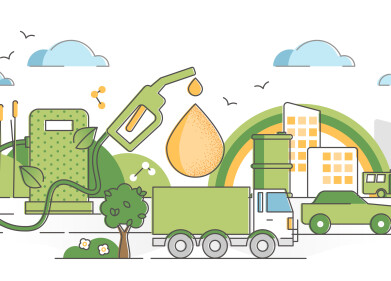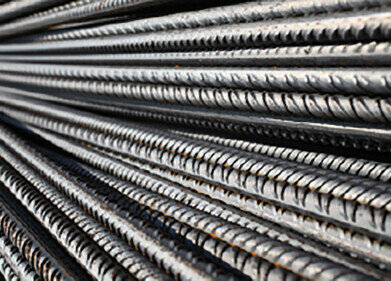Biofuel industry news
Custody Transfer in Oil and Gas: Your Questions Answered
Jan 07 2022
Oil and gas is a global industry, with products often travelling thousands of miles between extraction and final point of sale. For example, oil extracted in Canada may be transported to the USA for refining, then exported to Europe and Asia. Custody transfer plays a critical role in tracking transactions and ensuring the transportation of physical substances is as smooth and accurate as possible.
Want to know more? Read on for our complete guide to custody transfer in the oil and gas sector, covering everything from industry standards and best-practice procedures to the sophisticated instruments used to track materials with granular accuracy.
A brief intro to custody transfer
As touched on above, oil and gas products change hands at different stages along the production, transport and storage lines. For example, crude oil may change hands when it’s transferred from a wellsite to a pipeline. It may change hands again when it’s transferred from a pipeline to a storage facility, then again when it’s transferred from a storage facility to a cargo ship.
Keeping track of these transfers is fundamental to determining the value of the product at each point of exchange. Just like any market, buyers want to ensure they’re receiving what they’ve paid for and aren’t getting short changed. Similarly, sellers want to make sure they’re not oversupplying the buyer and eating into profits.
When high-value commodities such as oil and gas change hands, keeping track of measurements is a top priority. This field is called custody transfer and is governed by strict industry standards and international laws.
What about fiscal metering?
The term custody transfer is often used interchangeably with fiscal metering. Both refer to the process of meticulously tracking and calculating commodities when a change in ownership occurs. For example, when crude is transferred from an oil production well to a ship. Or when oil is transferred from a railcar to a refinery.
All about accuracy
During the custody transfer process, accuracy is front of mind for both the buyer receiving the material and the seller delivering the product. Achieving custody transfer accuracy, to the point that both the buyer and seller are satisfied, requires meticulous attention to detail.
This statement is especially true for gas, a commodity that’s virtually weightless and invisible to the naked eye. The intangible nature of gas means the demands and expectations placed on measurement instruments, systems and data processing software are high. Accuracy is also enforced via highly regulated industry standards, protocols, contracts and laws.
The ISO definition of accuracy
The following definition of “accuracy” from the International Organisation for Standardisation (ISO) is widely accepted across the oil and gas industry:
“The purpose is to outline the general principles to be understood when assessing accuracy (trueness and precision) of measurement methods and results, and in applications, and to establish practical estimations of the various measures by experiment. Is concerned exclusively with measurement methods which yield measurements on a continuous scale and give a single value as the test result. May be applied to a very wide range of materials, including liquids, powders and solid objects, manufactured or naturally occurring, provided that due consideration is given to any heterogeneity of the material.”
How is custody transfer measured?
Flow measurement is one of the most useful techniques available for custody transfer. A range of different instruments are used to record flow measurements, with sensors used to quantify levels of liquid or gas travelling past the device.
Below, we take a look at some of the most widely used flow meters used for used for custody transfer applications in the oil and gas industry.
- Differential pressure (DP) flowmeters
Differential pressure flow meters are used to measure transfer rates for liquid oil and gas. Instruments feature a primary element to constrict the flow stream and a differential pressure transmitter to measure variations in upstream and downstream pressure.
Both the American Petroleum Institute (API) and American Gas Association (AGA) have published standards for use of DP flow meters in custody transfer transactions.
- Turbine flowmeters
Turbine flow meters were pioneered by German engineer Reinhard Woltman in the late 1700s and have maintained their relevance in the modern oil and gas sector. The instruments use spinning blades to measure the flow rate of a liquid, ideally with low-viscosity and a fast flow rate.
Compared to alternative flow meters, turbine-powered instruments offer significant financial savings. However, the moving parts and components are vulnerable to wear and must be calibrated and maintained regularly.
- Positive displacement (PD) flowmeters
PD flow meters offer incredible accuracy, making them the instrument of choice for many custody transfer applications. They’re suitable for both slow and fast flows, as well as highly viscous liquids. The technology has been approved by a range of regulatory bodies, making them ideal for international custody transfer applications.
- Coriolis flowmeters
Coriolis flow meters have been utilised by the oil and gas industry for more than two decades. The instruments offer highly accurate measurements for both oil and gas, regardless of variations in flow speed, line pressure and temperature. An oscillating flow tube fitted with sensors is used to generate Coriolis force, with an electronic transmitter used to analyse data and generate measurements.
- Ultrasonic flowmeters
Ultrasonic flow meters have been used for custody transfer applications since the 1960s and originated in Japan. Most instruments use the transit-time method, which analyses sounds waves to calculate volumetric flow rate. Ultrasonic flow meters are widely used for oil and gas custody transfer applications, with the lack of moving parts helping to eliminate the issue of pressure drop. Other advantages include simple Installation and low maintenance costs.
- Lease Automatic Custody Transfer (LACT) unit
Lease Automatic Custody Transfer units are often used during the custody transfer of crude oil and petroleum products. These advanced instruments measure the net volume of liquid products and make the ownership transfer process as accurate and transparent as possible.
The high cost of error
High-value commodities like oil and gas mean even the smallest measurement discrepancies can translate to big costs for either the supplier or buyer. For example, a 0.1% error when transferring oil from a pipeline to a storage tank can translate to losses (or gains) worth hundreds of thousands of pounds per day.
Furthermore, if significant measurement errors are found, the buyer or seller may demand that all oil or gas transferred since the last approved calibration date is recalculated. This can result in additional costs for both parties.
The importance of calibration
A range of factors contribute to maintaining accuracy during oil and gas custody transfer processes, and calibration is undoubtedly one of the most important. Used across a wide range of industries, calibration involves comparing values calculated by a device or instrument with standards of known accuracy.
Routine calibration of the computers, pressure transmitters and temperature sensors used by flow measurement instruments is fundamental to ensuring accuracy and minimising the risk of measurement errors.
What is traceability?
Custody transfer codes and regulations for oil and gas can vary between countries, though traceability remains a universal requirement. There are always procedures in place to ensure calibration standards can be traced back to national and international metrology agencies. For example, the International Organisation of Legal Metrology (OIML), an intergovernmental body founded in 1955.
According to the website, the key goal is to “achieve international harmonisation for legal metrology, providing an important basis for measurement credibility, eliminating technical barriers to trade in measuring instruments and promoting international trade by confidence in measurement capability.”
The organisation is currently made up of 68 countries and a further 60 member states, making OIML one of the most prominent legal metrology governing bodies in the world.
As well as international standards, many countries enforce national standards. For example, in Canada all custody transfer measurements are regulated by government-operated agency, Measurement Canada. In the United States, the Federal Energy Regulatory Commission (FERC) dictates standards for custody transfer transactions between states.
The role of contracts
Contracts are an important part of the custody transfer process, with legal documents drawn up and signed by both parties. The contract should specify exact measurement requirements and meet both local and international regulations.
A guide to best practice custody transfer
During custody transfer transactions, the ultimate goal is to maximise accuracy and avoid favouring either party. For flow measurement applications, the following best practice habits are recommended:
- Calculating expected variations in ambient temperature and pressure
- Determining maximum static line pressure
- Determining maximum allowable permanent pressure loss
- Determining maximum allowable flow turndown
- Calculating expected frequency of flow variation
- Regularly calibrating instruments and transmitters
- Implementing strategic maintenance procedures
- Selecting the best instruments and hardware for the unique application and operating conditions
- Adhering to industry and regulatory body standards
- Meeting contractual agreements
Quantity isn’t the only concern during custody transfer transactions, with buyers also taking steps to determine the content and quality of the product. Find out more about why salt content matters and the methods used to quantify saline levels in ‘Why measure salt in crude oil? Development of an innovative handheld instrument that helps measure salt content anywhere, anytime.’
Digital Edition
PIN 25.5 Oct/Nov 2024
November 2024
Analytical Instrumentation - Picturing Viscosity – How Can a Viscometer or a Rheometer Benefit You? - Sustainable Grease Formulations: Evaluating Key Performance Parameters and Testing Method...
View all digital editions
Events
Jan 20 2025 San Diego, CA, USA
Jan 22 2025 Tokyo, Japan
Jan 25 2025 San Diego, CA, USA
SPE Hydraulic Fracturing Technology Conference and Exhibition
Feb 04 2025 The Woodlands, TX, USA
Feb 05 2025 Guangzhou, China



















